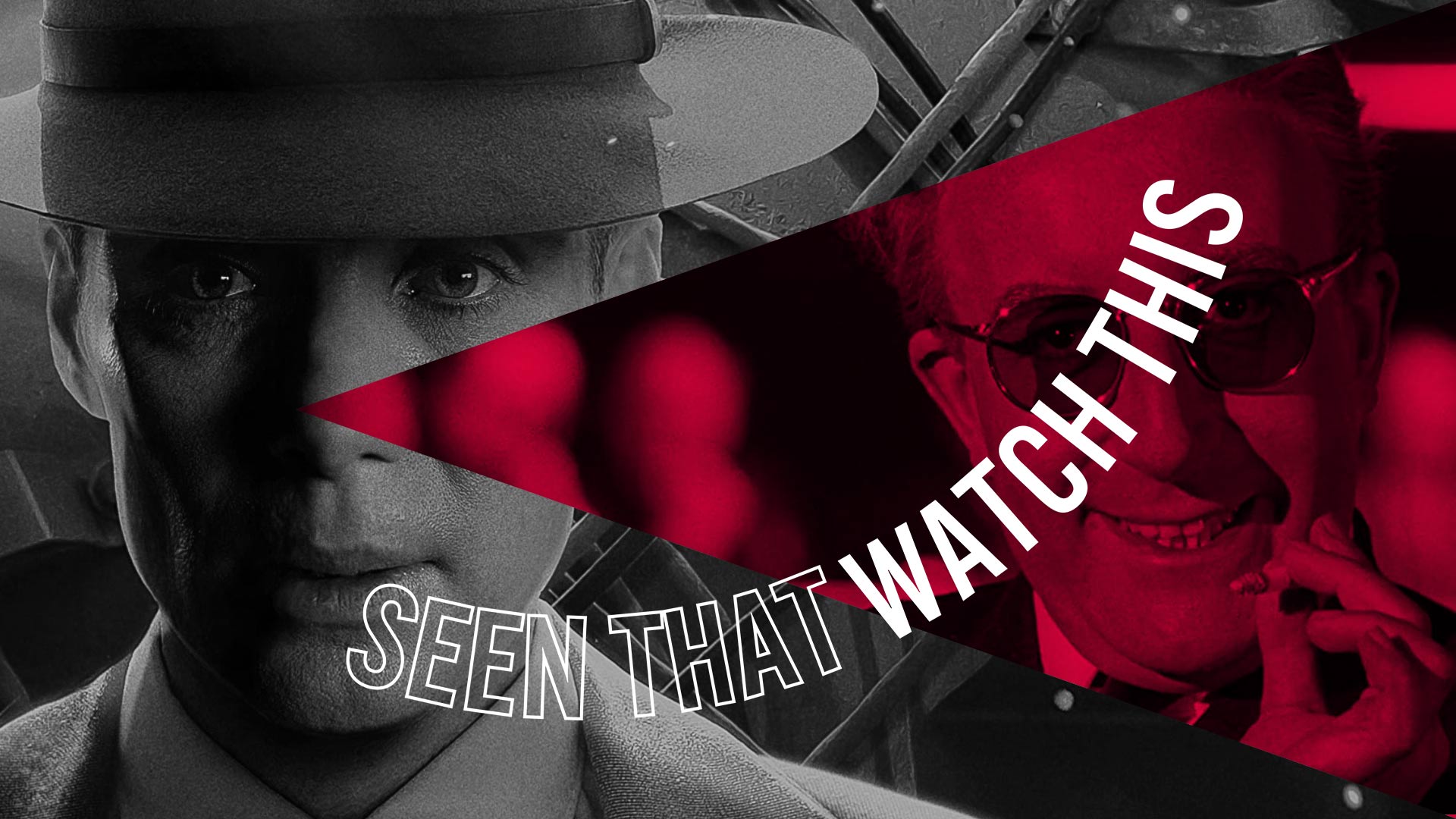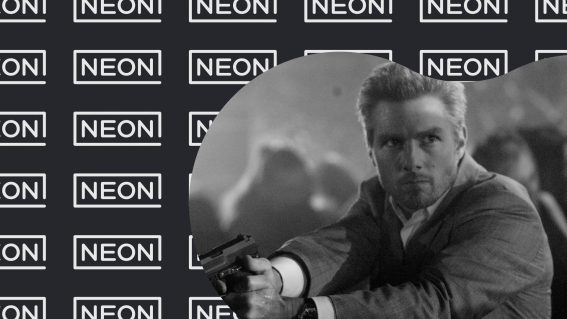Oppenheimer can’t top the greatest movie ever made about nuclear weapons

Seen That? Watch This is a fortnightly column from critic Luke Buckmaster, taking a new release and matching it to comparable works. This week, inspired by Oppenheimer, he revisits Stanley Kubrick’s comedic masterpiece Dr. Strangelove or: How I Learned to Stop Worrying and Love the Bomb.
Oppenheimer
Christopher Nolan has made a lucrative career creating wall-rattling spectacles. The British auteur’s modus operandi appears to be: bigger, bigger, bigger. And what’s bigger than the A-bomb? The uncomfortable feeling I had while watching his new biopic Oppenheimer was that the director was drawn to the project not to say something intellectually or morally interesting about such a catastrophic invention, which has left unfathomably deep scars on the human experience, but to climb another rung of cinematic showmanship.
As I wrote in my review: “if any film should have carefully defined messaging, it’s this.” Nolan weirdly frames Robert Downey Jr.’s character Lewis Strauss as the villain, a bureaucrat serving in the U.S. Atomic Energy Commission. His crime was conspiring against the protagonist and pushing him out of the spotlight. Oppenheimer’s involved the deaths of hundreds of thousands of people. As I also wrote: “It’s laughable to suggest Oppenheimer and Strauss’ moral crimes are comparable, but Nolan goes further than that: emphasising the latter’s chicanery in highlighter pen while the protagonist receives the soft glows of nuance.”
So, what does a film with brilliantly balanced messaging, also about the deployment of nuclear weapons, look like? The best film on this subject is also the most famous—Stanley Kubrick’s 1964 classic Dr. Strangelove Or: How I Learned to Stop Worrying and Love the Bomb. It’s very different: a comedy and a satire. But satirising a topic like this is even more difficult than dramatisation, requiring much tightrope-walking and minefield-navigating. And, like any kind of comedy, getting your targets right. The comedy term “punching up” is an important part of this process. It’s a synonym for “critiquing power structures.”
Kubrick’s story about the authorisation and deployment of nuclear weapons onto Soviet Russia—which involves a rogue general, a famous “war room”, and an amazing trio of performances from Peter Sellers—certainly does that. Its targets include American paranoia about communist infiltration and the idiosyncrasies of its governmental system, the depiction of which makes a broader point about the absurdity of human-concocted politics. Arriving two years after the Cuban missile crisis, Dr Strangelove also taps into a fear that a nuclear weapon might be deployed without the authorisation of the expected people, i.e. the US President.
The plot kicks off when an Air Force General, humorously named Jack D. Ripper (Sterling Hayden), authorises the dropping of nuclear bombs over Russia, exploiting a loophole allowing him to do it without the permission of President Muffley (Sellers). Ripper then seals off his base, disallowing contact with the outside. At one point the General monologues to British RAF officer Lionel Mandrake (Sellers again) about how he only drinks distilled water and pure grain alcohol, because “fluoridation is the most monstrously conceived and dangerous communist plot we’ve ever had to face.”
In the contemporary world you could rationalise Ripper as QAnon or “the big lie” adjacent. His perverted ideas cannot be countered through logic or facts. Pointing out there’s no evidence of his assertions simply, to him, demonstrates the extent of the conspiracy (this is called “self-sealing”).
High up in the sky, the floundering pilots manning a B-52 bomber receive the order and realise it’s go time, fumbling with their procedural manuals and clarifying protocol. Commander Major Kong (Slim Pickens) dons his cowboy hat to the sound of banging drums on the soundtrack, declaring: “Well boys, I reckon this is it. Nuclear combat toe-to-toe with the Russkies.”
And then there’s the war room. “Gentlemen, you can’t fight in here: this is the war room!” Sellers famously exclaims. It’s a marvellously designed set, with a big circular table visualising the round-and-round-we-go relentlessness of political waffle. In one absurd conversation, Kubrick cleverly revealing only one side of it, the President calls the leader of Russia and explains what’s happened, that the bomb is on its way. The President feels like he’s the victim (“can you imagine how I feel about it?”) and their conversation ends with each person insisting they’re more sorry than the other (“don’t say you’re more sorry than I am….we’re both sorry!”).

You can sense from early images of the B-52s, incongruously accompanied by tranquil music, that Kubrick is playing funny buggers, though it’s not clear what he’s up to. He keeps his cards close to his chest. The satirical elements are deliciously elusive: close enough to feel, too distant to reconcile. The tone is cold and cerebral in some ways, insanely colourful in others, occasionally spilling over into wildness. Never more so than in scenes featuring Sellers’ outrageous third performance as the titular character: a chain-smoking, wheelchair-using scientific advisor, nuclear weapons expert and former Nazi.
During one gassed-up monologue, Strangelove accidentally refers to President Muffley as “mein Führer!” It’s a joke so loaded, so cutting and caustic you can’t even laugh. The same is true of other moments. Kubrick makes us unsure how to respond, so we keep cross-examining the film and its intentions. It comes alive in our brains and the comedy is tanged in terrible bitterness. It dangerously tinkers on the edge of “too far” but remains just on the right side of it. Kubrick never loses his high ground or his nous; unlike Nolan, he gets his messages right.




















